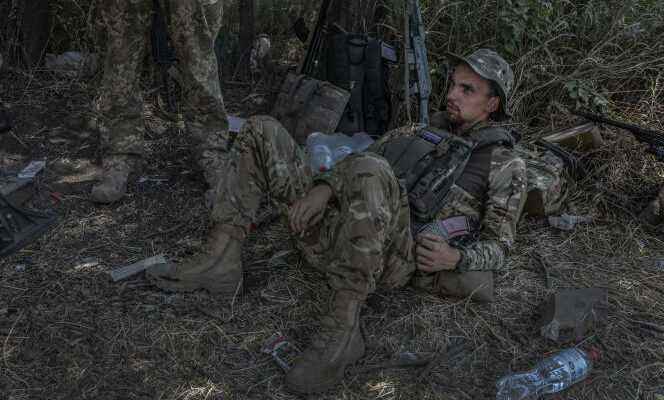Continuation of the maneuvers, pause in the fighting or tipping point of the war? More than four months after the entry of the Russian army on Ukrainian soil, it is difficult to know where the conflict is headed. On the ground, Moscow’s offensive in the Donbass seems to be on the “operational pause” box. The Russian army has made no progress since its capture of the Luhansk administrative region on July 3; and if the bombardments continue, they seem there more to exhaust (“soften”, in military jargon) the Ukrainian positions than to prepare new advances.
On Thursday July 7, Russian Defense Ministry spokesman Igor Konashenkov confirmed that Russian forces were taking a break to rest and replenish their capabilities.
If Vladimir Putin continues to say he is ready for escalation – on Thursday he said again that his country “has, on the whole, not started anything serious yet” in Ukraine – the vagueness persists over Russian military ambitions.
The concentration of forces (at least thirty tactical battalions) in the Donbass confirms the intention to capture at least the administrative region of Donetsk. But Russia still says it wants to go as far as Transnistria (in Moldova), to cut off Ukraine’s access to the Black Sea. And Russian and Belarusian political declarations do not rule out the possibility of a second attack on the capital, kyiv. On July 5, the Secretary of the Russian Security Council, Nikolai Patrushev, assured that the operation will continue “until Russia achieves its goals of demilitarizing Ukraine”.
“Staff Shortage”
On the tactical level, the Russian military analyst Sergei Poletaev describes, in an article published on the Globalaffairs.ru site, a Russian army gradually adapting to the reality of the Ukrainian terrain. “The Russian armed forces, in combination with those of the people’s republics [de Donetsk et de Louhansk]as well as [mercenaires] of “Wagner”, adopted a slow pushing tactic of the front line based on artillery. This can be called a modern copy of the principle of the First World War: “artillery devastates, infantry overwhelms”. »
But like many other Russian experts, Mr. Poletaev deplores a “staff shortage” stemming from the political rejection of mass mobilization in Russia. This shortage results in an inability to obtain the necessary numerical dominance for the attacker. On the ground, the Russian forces fail to maneuver or break through the front with rapid blows that would allow the encirclement of the enemy.
You have 60.29% of this article left to read. The following is for subscribers only.
